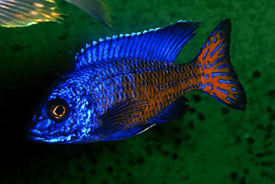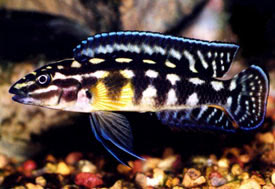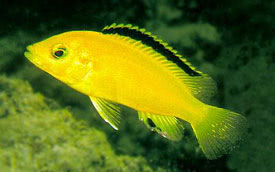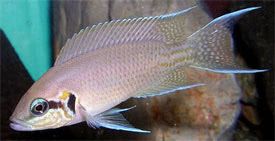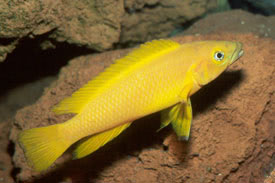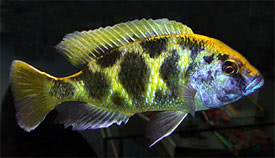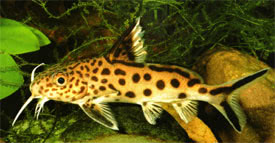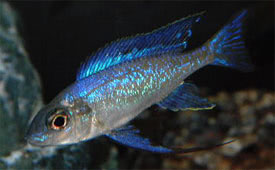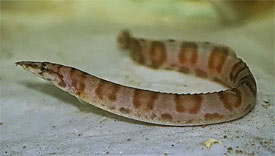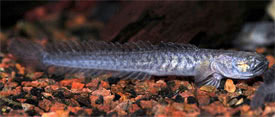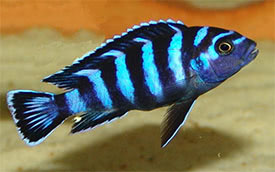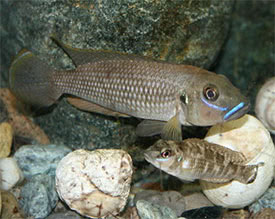
 Magyarul / Hungarian
Magyarul / Hungarian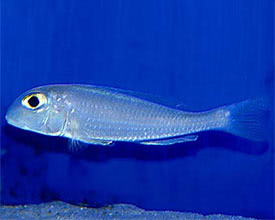
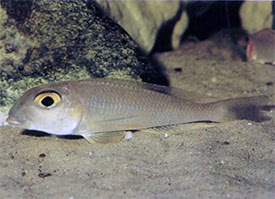
- Scientific name: Xenotilapia sima
- Synonyms: -
- Common name: Big-Eyed Xenotilapia
- Group: Cichlids
- Distribution: Africa; endemic to Lake Tanganyika
- Size: male: 16 cm, female: 10 cm
- Biotope: Inhabits the 2-15 metres deep waters in the lake, where it is found in large groups over sandy substrates.
- Social behavior: A peaceful, but skittish fish, that should be kept in a small group of 6-10 species. Males become territorial during spawning, and several females should be kept per male.
- Diet: Omnivorous; In nature they feed on small invertebrates they find by sifting mouthfuls of sand, while in the aquarium they usually accept all kinds of foods, but live and frozen foods should be their main diet. They feed almost exclusively from the substrate.
- Breeding: Quite easy
- Tank: Minimum 120 litres
- Population: 6-8 fish for 240 litres
- Decoration: Use sandy bottom as the fish like to dig in the substrate, and gravel can become trapped in their throats or damage their gills. Build some scattered piles of rockwork where the fish can hide.
- Temperature: 23-27 °C
- pH: 8.0-9.5
- Hardness: 8.0-25.0 dGH
- Lifespan: 5-8 years
Males grow larger than females, and have pointed dorsal and anal fins.
When we want to breed this fish, it is best to buy a group of young fish and allow them to become sexually mature together. You can remove some males if you have too many, as each will require a breeding territory of at least 30 cm diameter. You should keep at least 2 females for each male. The breeding aquarium should have hard and alkaline (pH 8-8,5) water with a temperature of 25-27 °C. They are maternal mouthbrooders. The male will dig a pit in his territory that 5 cm deep and 15-20 cm in diameter, and which will be used as the spawning site. He will try to entice females into this area by display around this pit. When a female is ready to spawn, she will approach the spawning site and lay her eggs there, allowing the male to fertilise them before picking them up in her mouth. The female can lay up to 100 eggs. The female will carry the brood for around 3 weeks before releasing the free swimming fry. She will not eat during this time, and under stress she may spit out the brood prematurely or eat them. The fry will develop slowly if they do not get enough live foods in the early period. They can be easily raise after they reach 2-3 cm in length.
http://www.fishbase.org/summary/9180
http://www.seriouslyfish.com/species/xenotilapia-sima/
A Tanganyika- és Malawi-tó sügérvilága
Aquarium atlas Vol3.



